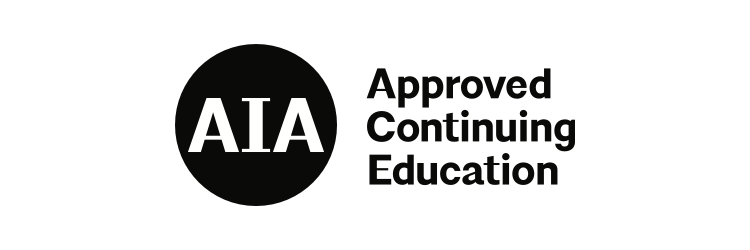Midwest
EVENT THEME
Detailing High-Performance Facades: Strategy, Specifications, and Advanced Cladding Materials
Today’s high-performance facade standards require the deft balancing of aesthetics, technical detailing, and the demands of the client and local building regulations. This workshop will discuss both material and technical solutions to meet those standards. Experts will be on hand to lead tutorials on the most recent innovations in rainscreen cladding, sealant solutions, and much more. Attendees will leave with a greater knowledge of material applications at the cutting-edge of energy performance and code compliance, all while learning of attractive solutions for clients and end users.
view_agenda Agenda
10AM - 11AM
Credit type: 1 AIA HSW LU
Provider: Porcelanosa
This course discusses the rain screen system for exterior facades using porcelain tile or solid surface
Learning Objectives
- Participants should be able to correctly define various types of exterior cladding systems.
- Participants should be able to identify the major components/features of the ventilated facade system.
- Participants will gain an understanding of the advantages of the ventilated facade when compared to other cladding systems.
- Participants will gain an understanding of appropriate use of the ventilated facade system.
11AM - 12PM
Credit type: 1 AIA HSW LU
Provider: Kawneer
Architectural aluminum framing systems can be used to create high-performing sustainable buildings. In this presentation we will look at three main areas in which aluminum framing impacts whole-building performance, energy efficiency, material utilization and occupant well-being.
Learning Objectives
- Understand Differences Between Product Certification and Whole Building Certification.
- Understand Environmental Product Declarations and Building Product Disclosures.
- Understand how Framing System Energy Performance Impacts Whole Building Sustainability Performance.
- Evaluate Strategies for Daylighting, Views, Shading and Sound Transmission and Their Impact on Sustainability Performance.
12PM - 1PM
Credit type: 1 AIA HSW LU
Provider: Northern Facades
Reaching towards Net Zero energy ready buildings is becoming a popular topic in todays climate changing world. Energy efficiency has expanded towards exterior wall assemblies where effects of thermal bridging are considered and thermally broken sub-framing systems are becoming the new norm. This course will identify and compare various cladding attachment methods on the market. Learn how to determine the appropriate clip for your project and how to compare effective thermal resistance required to achieve projects targeted R – Value.
Learning Objectives
- In this presentation you will be able to understand how the use of thermal clips will impact thermal bridging on various exterior wall assembly applications.
- Identify types of clips currently on the market.
- Learn how to calculate the number of clips required on your project by identifying structural forces involved to determine clip spacing.
- Gain insight on how the NFPA 285 fire code applies to thermal clips.
- Acquire a new ability to effectively detail thermal clips on architectural drawings.
1PM - 2PM
Credit type: 1 AIA HSW LU
Provider: Atlas Roofing
Design practices increasingly rely on exterior insulation to meet energy codes and continuous insulation requirements. This shift brings new challenges, especially for NFPA 285-compliant wall assemblies, moisture management, thermal continuity, and long-term durability. This presentation explores the performance of exterior insulation under the demanding conditions of modern rainscreens and masonry veneers, with a focus on NFPA 285 compliance, thermal bridging, moisture transport, durability and sustainability. Attendees will gain insights to help design, specify, and install exterior insulation effectively while avoiding potential issues.
Learning Objectives
- Review building code requirements and testing methods for fire propagation and smoke development, with a focus on understanding the NFPA 285 fire propagation test in relation to material properties.
- Examine insulation properties related to water, air, thermal, & durability for rainscreens and masonry veneers to optimize insulation choices.
- Identify challenges such as thermal bridging, multiple drain planes, drainage efficiency, water absorption, and vapor transmission to better understand the building science acumen necessary for successful wall designs.
- Explore the varying manufacturing and sustainability profiles of the core options for continuous insulation in order to betters asses how best to utilize continuous insulation to offset the project’s embodied and operational carbon footprint.











